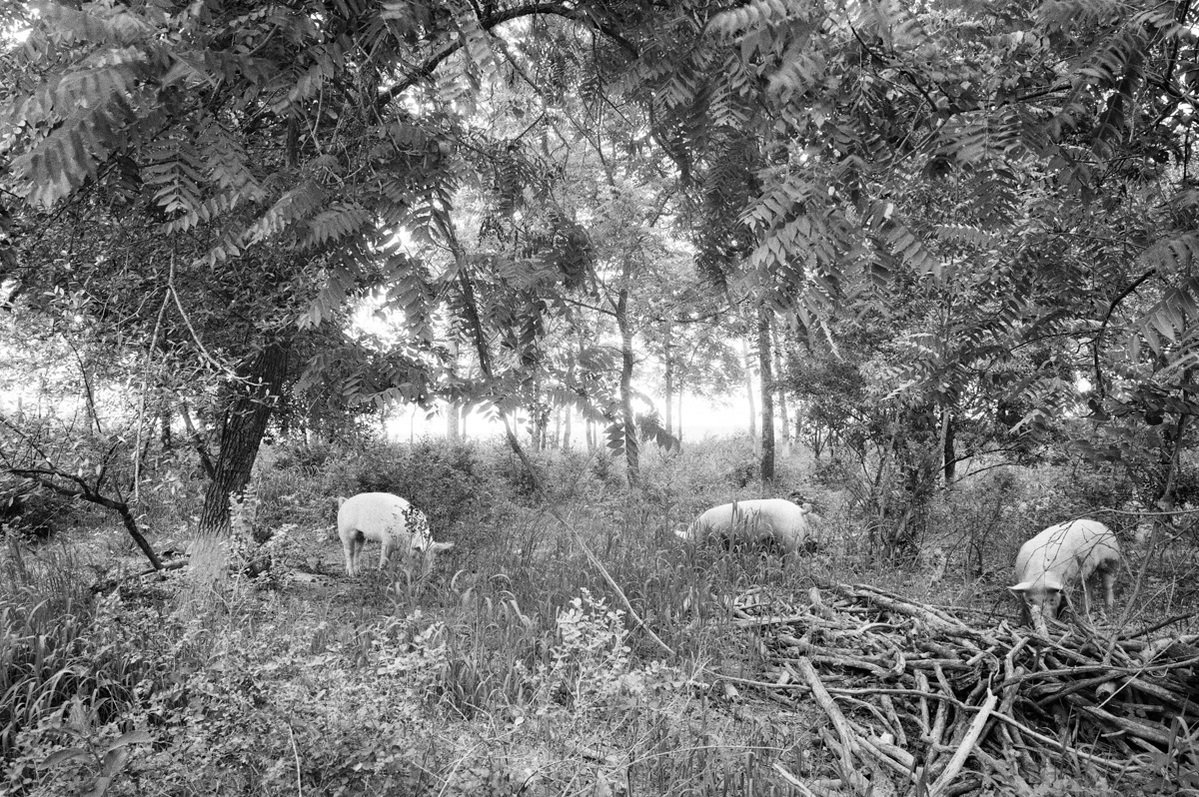On Noah Wilson’s Ground Truthing
unpublished essay, 2013
Noah Wilson, San Bruno, California. On September 9, 2010, a natural gas pipeline in San Bruno exploded, destroying 38 homes and killing 8 people. The investigation into the pipeline failure and negligence of the Pacific Gas and Electric Company is ongoing. © Noah Wilson
In data collection, “ground truth” refers to on-site measurements or observations of objects, areas or phenomena to facilitate understanding and contextualization of remotely sensed information. Remote sensing allows access to information often difficult to secure—or even entirely unavailable—about subjects as diverse as national security, land usage and public health. And yet, there are times when technology falters and we cannot observe from a distance—clarity requires a closer look.
It is appropriate Noah Wilson has titled this body of work Ground Truthing as exhaustive research inspired travel to each location he photographs. During his first project about the landscape in 2005, Wilson recognized his ignorance of many of the sites he was photographing. Ground Truthing was born from reading about, more than looking at, the landscape, an attempt to deepen his understanding of the subtle character of place. The interplay between man and his environment emerged as Wilson’s central interest, those narratives that illustrate the way "…our land passes in and out of our bodies just as our bodies pass in and out of our land,"[1] a poignant description from cultural critic and farmer, Wendell Berry. For instance, the link between high rates of cancer in communities downwind from nuclear testing in Nevada, or the redevelopment of abandoned lots into farms and gardens in Braddock, Pennsylvania following the devastating collapse of the town’s steel industry. Between 2009 and 2011, he took three trips throughout the United States to visit and photograph select locations he knew only through text.
An overwhelming sense of normalcy pervades Wilson’s pictures of these landscapes. Lush forests, grazing animals and allusions to small town U.S.A. seem to wax poetic about the American landscape. It is only through succinct, matter-of-fact explanations we discover these are not simply bucolic images. Many of these landscapes are, or were, contentious battlegrounds—symbols of the ever-complicated relationship between humans and their surroundings. Captions explain how coal sludge contaminated the water supply of over 27,000 residents in Martin County, Kentucky, and how the small agricultural community of Arvin, California is plagued by the worst air quality in the nation. Through this symbiosis of text and image, Wilson reveals the disconnect between the appearance and reality of these scenes.
Wilson’s project conceptually follows closely in the footsteps of Joel Sternfeld’s celebrated On this Site: Landscape in Memoriam (1993-1996). Sternfeld recontextualizes seemingly innocuous photographs of tranquil urban, suburban and rural landscapes in the United States through accompanying texts describing violent tragedies – like the Oklahoma City bombing and assassination of Martin Luther King, Jr. – that occurred on the depicted sites. These landscapes bear no marks of the horrors afflicted.
While “ground truth” information implies direct experience results in greater knowledge, Wilson’s project reveals the limitations inherent to describing a place—seemingly documented on-site by the camera—through photographs. Wilson explains, “I recognized that I did not see, in my pictures, what I experienced in the places I photographed. I saw the land as something complex and unknowable at a glance, and the record that my camera produced seemed lacking.” Presented in crisp, decisive color, Sternfeld’s photographs appear to accurately document the reality of these sites. His pictures do nothing to obscure; rather, these violent histories are undetectable. Through the aesthetics of his photographs, Wilson extends this similar inaccessibility beyond the sites themselves to the medium of their representation. His grainy, black and white photographs draw immediate attention to surface texture; he renders the camera’s mediation palpable. Belying the photographic process, they bear greater resemblance to etchings by Rembrandt or Piranesi than to many contemporary landscape photographs; they resist assumptions about the accuracy and faithfulness of the photographic medium.
Photographer Richard Misrach once asserted, “[i]n the past when I travelled, I used to look for the light, the beautiful forms. Now I cannot escape the fact that every facet of the landscape is suffused with political implications.”[2] While a site and its politics are inextricably linked for some, Wilson maintains a more neutral, open-ended position. He does not photograph the despair of affected populations or the menacing corporations responsible for environmental degradation. A consistent aesthetic and perspective characterizes these photographs, whether the site represents the disheartening tale of an elementary school constructed on a former toxic dumpsite or the early victory of farmers in the Sacramento Valley over detrimental mining practices in the Sierra Nevada Mountains. This project becomes more about the tension between surface and reality, representation and experience, than presenting a particular stance. There are no answers; only the identification of a largely invisible or uninvestigated phenomenon in its many iterations.
In The Pleasures of Good Photographs, critic Gerry Badger suggests,“[p]hotography’s relationship with reality, so simple, so profound, yet so damnably slippery, is unique. The pleasures of good photographs derive principally from an encompassing of that relationship within the image.”[3] Inasmuch as Ground Truthing operates as an examination of the landscape, it also considers the role and function of photography. Wilson not only asks us to question whether photographs can tell a complete story. He also reflects on the way we use our own interpretations to complete narratives from fragmentary information – and how these impressions can easily be fraught with misunderstanding.
[1] Wendell Berry, The Unsettling of America: Culture and Agriculture (San Francisco: Sierra Club Books, 1977), p. 22.
[2] Richard Misrach quoted by Gerry Badger, “In Photographica Deserta – The Desert Cantos of Richard Misrach,” Creative Camera (1988).
[3] Gerry Badger, The Pleasures of Good Photographs (New York: Aperture, 2010), 16.





